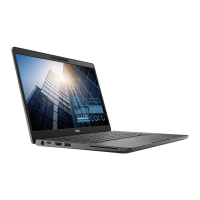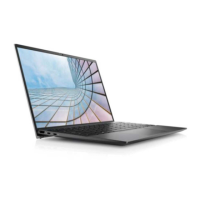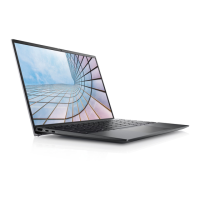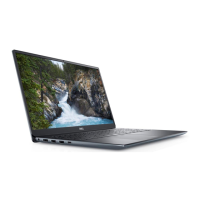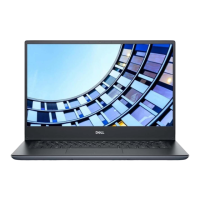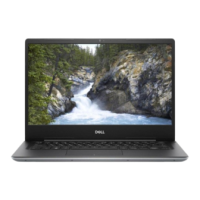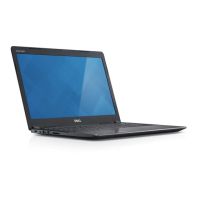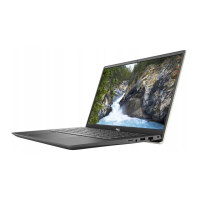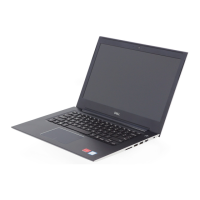Removing and installing components Page: 9 Base cover Instructions for removing and installing the computer's base cover, including screw details.
Battery Detailed steps for removing and installing the computer's battery, including cable disconnection.
Speaker Procedures for removing and installing the computer's speaker assembly and its associated cable.
Coin cell battery Steps for removing and installing the coin cell battery, including cable disconnection and prying.
WLAN card Procedure for removing and installing the Wireless Local Area Network (WLAN) card.
System fan Steps for removing and installing the computer's system fan, including cable and screw management.
Heat sink Instructions for removing and installing the computer's heat sink, involving specific screw sequences.
Input Output board Procedure for removing and installing the computer's Input Output (I/O) board and its cables.
Power button Steps for removing and installing the computer's power button assembly.
System board Detailed instructions for removing and installing the main system board, including cable disconnections.
Touchpad Procedure for removing and installing the computer's touchpad, including adhesive and screws.
Display assembly Instructions for removing and installing the entire display assembly, including hinge brackets.
Display bezel Procedure for removing and installing the display bezel using a plastic scribe.
Camera Steps for removing and installing the computer's camera module and its cable.
Display panel Instructions for removing and installing the display panel, involving screws and cable disconnection.
Display hinges Procedure for removing and installing the display hinge components and their cover.
DC-in Steps for removing and installing the DC-in port and its associated power adapter cable.
Palm rest Instructions for removing and installing the palm rest assembly, including various components.
eDP cable Procedure for removing and installing the eDP cable connecting the display panel.
Technology and components Page: 39 DDR4 Details about DDR4 memory technology, its specifications and differences from DDR3.
Memory Errors Information on troubleshooting common memory errors and associated system codes.
USB features Overview of Universal Serial Bus (USB) introduction and its evolution.
Applications Discusses how USB 3.0/3.1 Gen 1 enhances device performance and user experience.
Compatibility Information on USB 3.0/3.1 Gen 1 compatibility with previous USB versions and operating systems.
USB Type C Description of the USB Type-C connector and its capabilities, including power delivery.
Alternate Mode Explanation of USB Type-C's alternate mode feature supporting various output protocols.
USB Power Delivery Details on USB Power Delivery specification for charging devices up to 100 watts.
HDMI 1.4 Explanation of the HDMI 1.4 standard, its features, and advantages.
System specifications Page: 44 Memory Specifications for system memory, including type, speed, capacity, and connectors.
Audio specification Specifications for the audio controller, including integrated speakers and performance.
Keyboard Specifications for the keyboard, including the number of keys and layout options.
Camera Specifications for the built-in camera, including focus, resolution, and diagonal field of view.
Battery specification Specifications for the system battery, including wattage, type, and physical dimensions.
AC adapter Specifications for the AC adapter, including wattage, voltage, current, and dimensions.
System setup Page: 49 Boot menu Instructions on accessing and using the one-time boot menu for system startup options.
Navigation keys Explanation of keyboard keys used for navigating within the System Setup utility.
General options Configuration settings for system information, battery, and boot sequence.
Security Options for setting and managing system, admin, and drive passwords.
Password Bypass Allows bypassing system and HDD passwords during a system restart.
Password Change Option to change the system password when the administrator password is set.
TPM 2.0 Security Options to enable or disable the Trusted Platform Module (TPM) during POST.
Secure boot Enables or disables the Secure Boot Feature for system security.
Performance Options to configure processor core support and speed stepping technologies.
Power management Settings for AC behavior, auto power-on, USB wake support, and battery charge modes.
Post behavior Configuration options for system startup warnings, fast boot, and logo display.
Wireless options Controls for wireless devices, including enabling/disabling WLAN and Bluetooth.
Maintenance Options for service tag, BIOS downgrade, data wipe, and BIOS recovery.
System logs Allows viewing and clearing of BIOS, Thermal, and Power events.
Software Page: 68 Chipset drivers Verification of Intel chipset and Intel Management Engine Interface drivers.
USB drivers Verification of installed USB drivers, including USB controllers.
Network drivers Verification of installed network drivers, including WLAN and Bluetooth.
Audio drivers Verification of installed audio drivers for microphone and speakers.
Other drivers Lists driver details for other components in Device Manager.
Firmware Verification of installed firmware drivers.


